Art World
‘Our Medium Is American Democracy’: A New Book Compiles More than 550 Artist Billboards
The project features seven years worth of billboards commissioned by the artist collective and activist group For Freedoms.
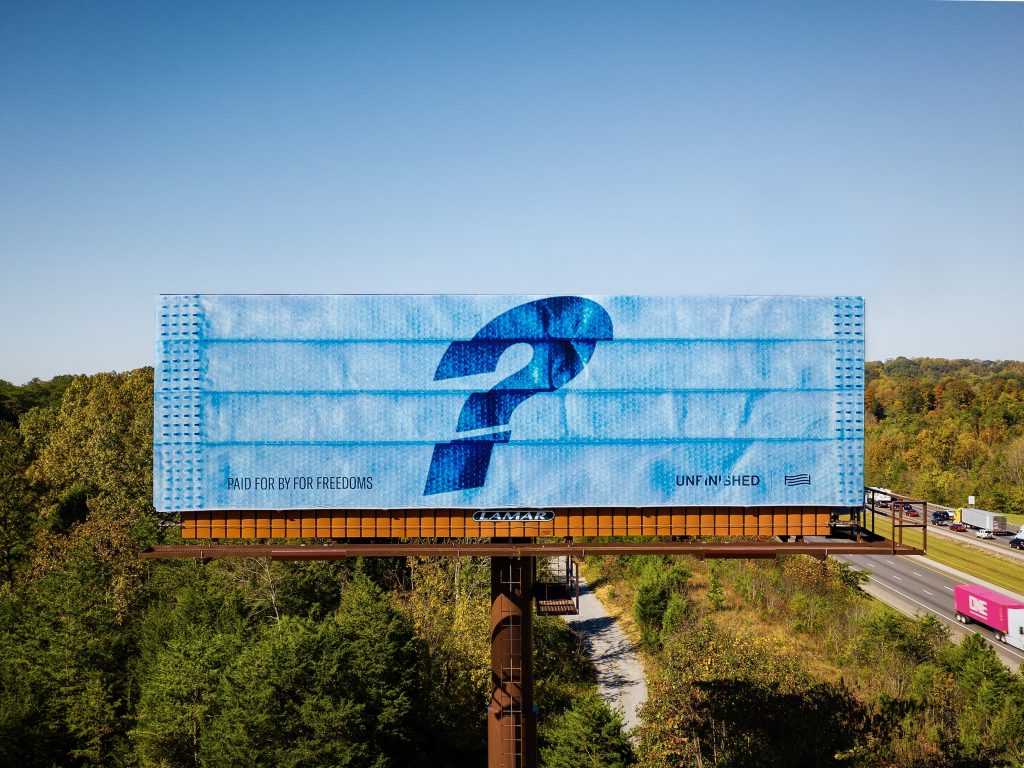
The project features seven years worth of billboards commissioned by the artist collective and activist group For Freedoms.

Brian Boucher

You read about it here first in 2016: when a foursome of artists launched For Freedoms, an organization that would mimic a political action committee and give artists a public voice in the run-up to the presidential election that pitted Hillary Clinton against Donald Trump, Artnet broke the news.
Launched by artists Wyatt Gallery, Eric Gottesman, Hank Willis Thomas, and Michelle Woo, the group had among its aims “to expand what participation in a democracy looks like.” Said the artists at the time, “Our medium for this project is American democracy.”
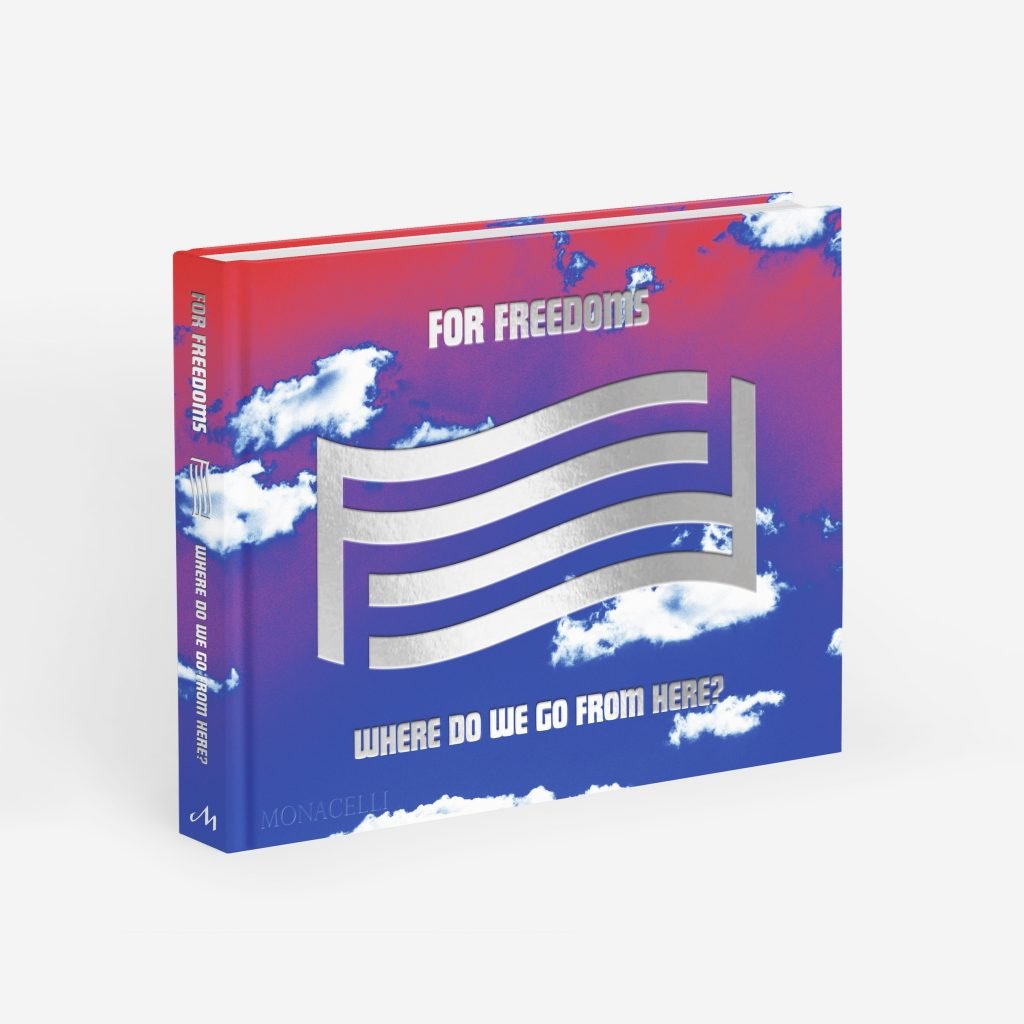
For Freedoms, Where Do We Go From Here?, published by Monacelli | Phaidon and designed by Albert James Ignacio.
One of its trademarks has been artist-commissioned billboards. Now, the founders, along with For Freedoms associate director taylor brock, have authored the richly illustrated book Where Do We Go From Here?, which documents every billboard the group has commissioned, totaling more than 550.
The roster includes superstars like Shepard Fairey, Theaster Gates, the Guerrilla Girls, Jenny Holzer, Rashid Johnson, JR, Carrie Mae Weems, Deborah Willis, and Ai Weiwei. For Freedoms created the book with the help of creative director Albert Ignacio, who has worked with the collective since its founding.

For Freedoms, Where Do We Go From Here?. published by Monacelli | Phaidon and designed by Albert James Ignacio.
Published by Monacelli, Where Do We Go From Here? is available for advance order with a publication date of October 15 (right before another election with Trump as the GOP standard-bearer).
The group’s name plays on a pillar of Franklin D. Roosevelt’s 1941 State of the Union address: that America offers freedom of speech and worship along with freedom from want and fear. The enterprise didn’t manage to keep Trump from the White House, but it has since undertaken many types of programming, including town halls, public art installations, and exhibitions, across all U.S. states and some territories.
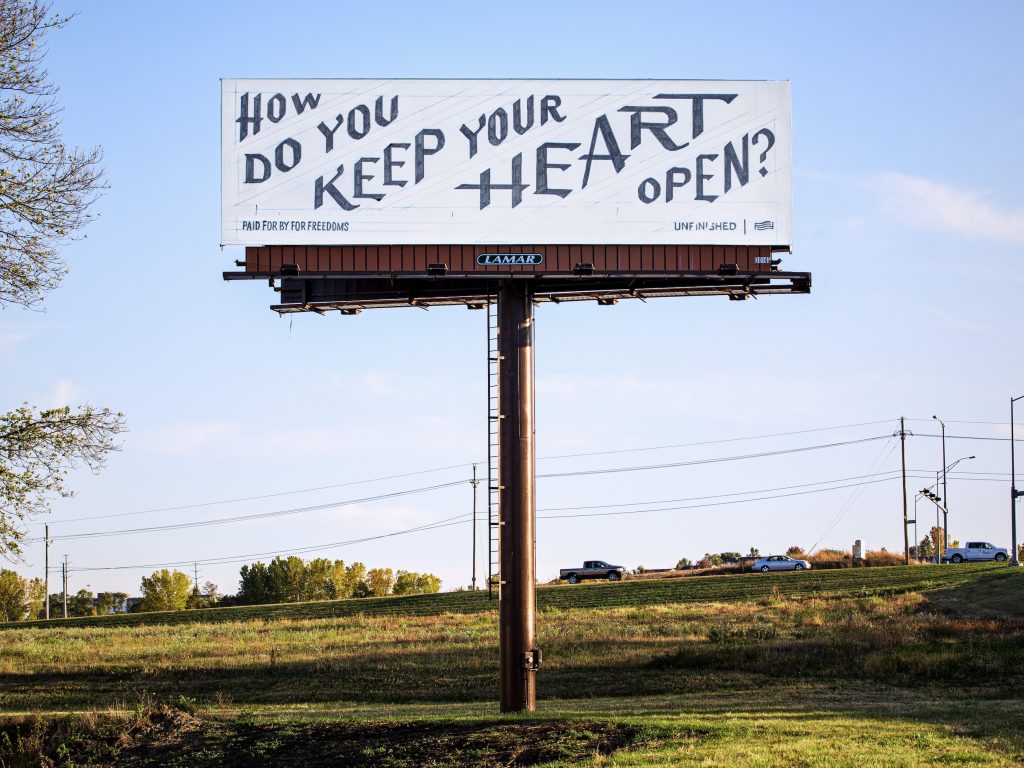
Christine Wong Yap, How do you keep your heart open (For Susan)
“The billboards go up and they come down a couple weeks later and are never seen again,” said Gallery in a video call, commenting on the impetus to create the volume. “Then they only remain present through photography, so the book is the main place where the billboards will live on and continue to have an impact.”
“Everything is fleeting in the digital area,” said brock of the impetus behind creating a book, adding that they asked, “How can we create a living archive?”
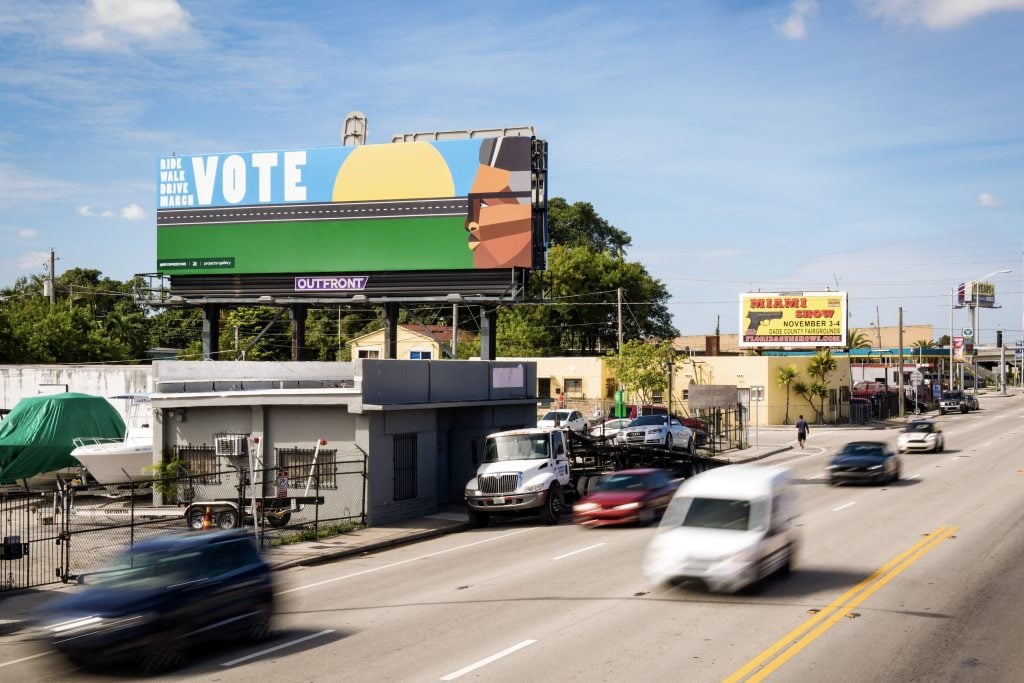
Derrick Adams, Ode to Bayard Rustin, (2018). Photo: Mike Butler.
The book features texts by contributors including Whitney Museum of American Art associate curator Rujeko Hockley and musician-activist-artist Nadya Tolokonnikova of Pussy Riot, as well as interviews with participating artists and behind-the-scenes stories of the organization.
For Freedoms has also teamed up with other organizations, like Landback.Art and Times Square Arts, and the book offers an overview of those collaborations.
At least at the beginning, the billboard project wasn’t met with universal praise.
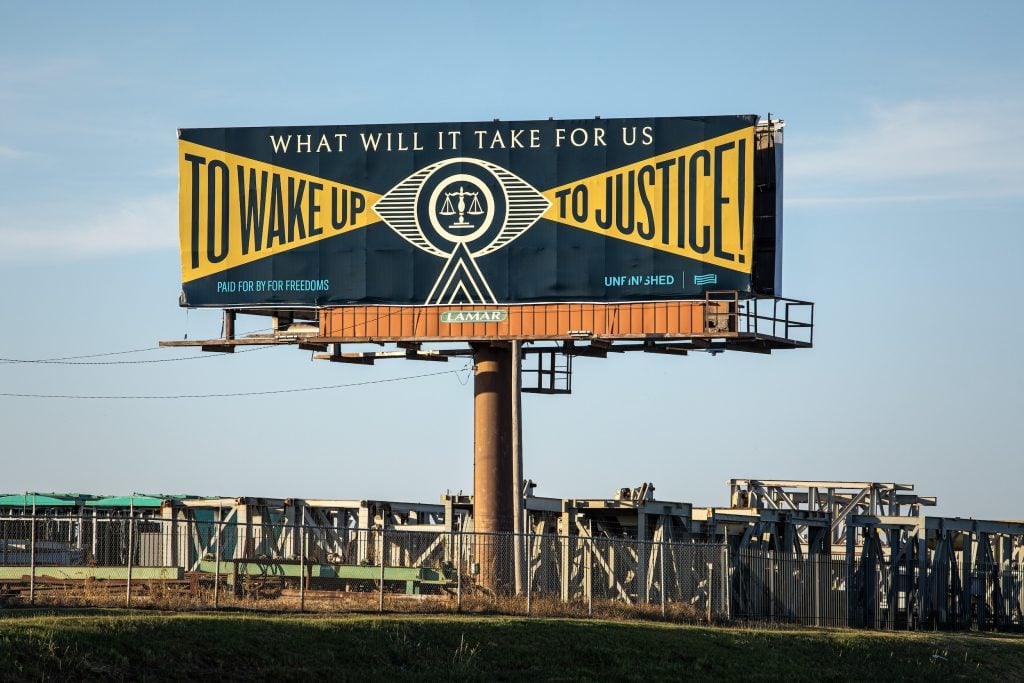
Shepard Fairey/Obey Giant, Wake Up to Justice (2020). Photo: Jeff Scroggins.
“Some of the criticism we got for doing billboards was that they were a private media space that makes the landscape ugly,” said Gottesman on the video call, “but in order to inject the kind of discourse we wanted, we have to engage with systems that are corrupted. Little did we know how corrupted the tools for communication are, and that’s becoming more and more evident.”
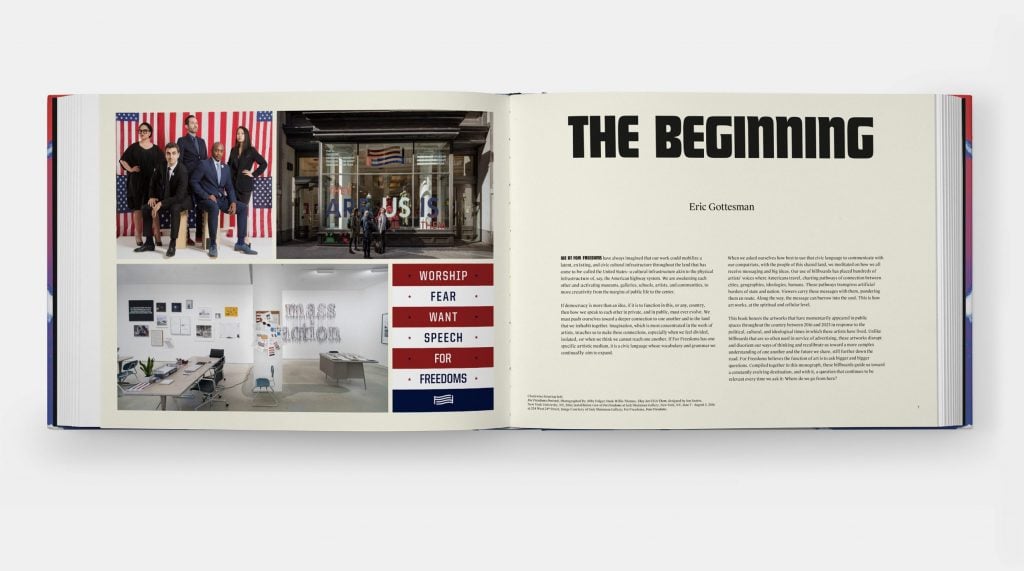
For Freedoms: Where Do We Go From Here? published by Monacelli | Phaidon and designed by Albert James Ignacio.
Injecting art into public space in an unexpected way has paid dividends, including in the form of phone calls and emails asking questions, including, said Gallery, “What side are you on?”
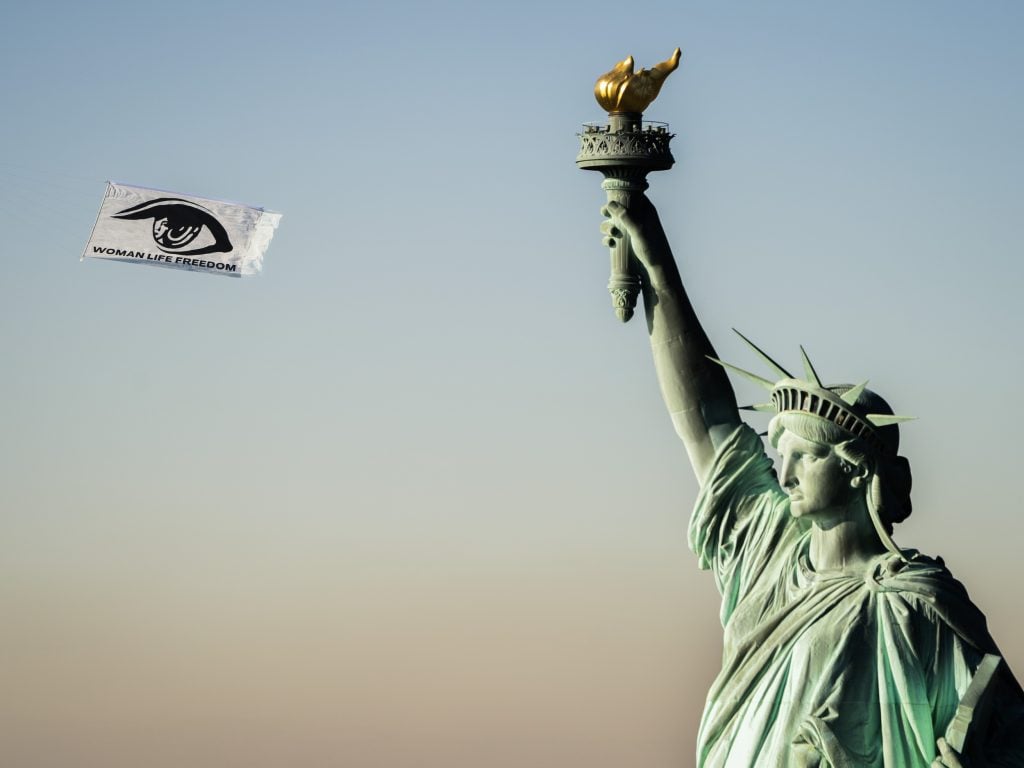
Mahvash Mostala, Reflection of Woman | نز†ساکعنا (2022). Photo: Austin Paz. Courtesy Even/Odd.
The book also delves into some of the challenges of collaboration, say the authors. Even determining what label to apply to the book has been difficult. They’ve been calling it a monograph, but it’s almost more of a multigraph, or a monograph of many artists. (With a laugh, they acknowledged that as a word, polygraph is unfortunately taken.)
The book focuses on the billboards not only because they’re the most visual project (more so than, say, town halls), but also because they’re the group’s most public-facing work. But they are hardly the group’s sole focus, Gallery emphasized.
“We’ve wanted to show everything we do,” he said. “That might be the second book.”